Do Hawks Eat Groundhogs? Discover the Impressing Reality!
While hawks are known for their soaring flights and impressive hunting abilities, groundhogs are known for their burrowing abilities and winter hibernation. But what happens when these two animals come into contact?
Do hawks eat groundhogs? Yes, hawks eat groundhogs. Hawks are opportunistic hunters, and groundhogs are occasionally a part of their diet. Some species of hawks, such as the red-tailed hawk and the Cooper’s hawk, have developed a taste for these rodents. However, hawks are not the primary predator of groundhogs, as foxes, coyotes, and other predators also hunt them.
Understanding the relationship between hawks and groundhogs can provide valuable insight into the behavior and ecology of these animals. Therefore, this article will explore the question, “Do hawks eat groundhogs?” and examine the factors that affect the relationship between these two animals.
Which Hawks Eat Groundhogs?
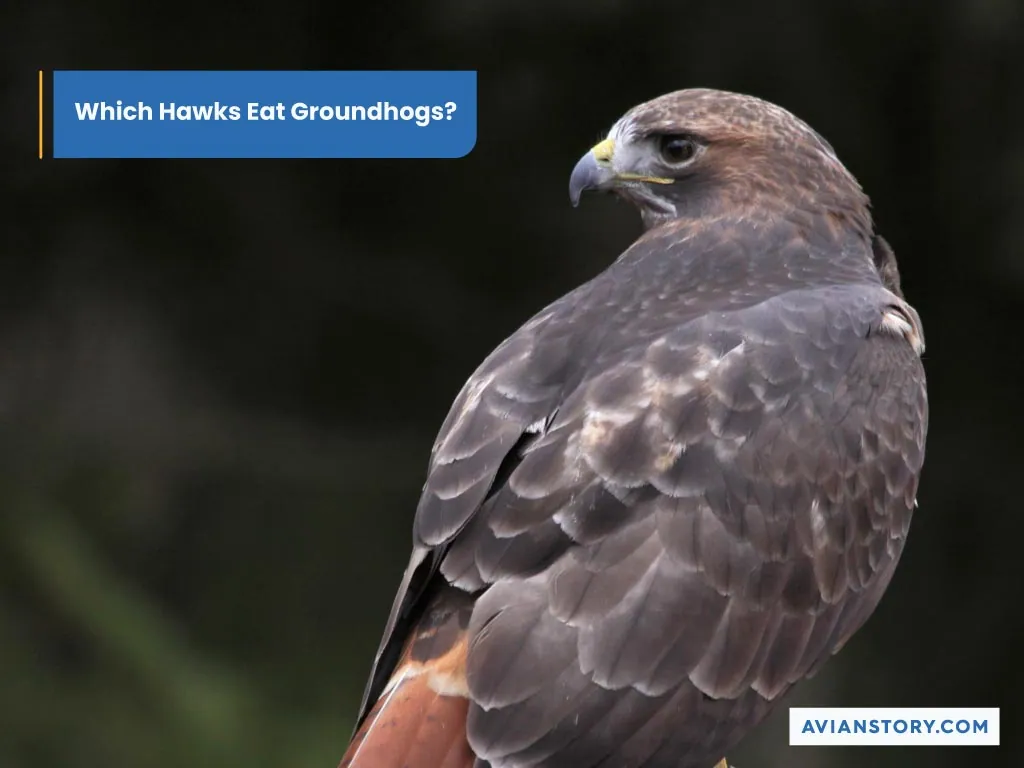
Hawks are birds of prey belonging to the family Accipitridae. There are over 200 species of hawks worldwide, and they are found on every continent except Antarctica. Hawks are known for their sharp talons and hooked beaks, which they use to capture and kill their prey.
Hawks are solitary birds that hunt during the day. They typically perch in high vantage points, such as trees or telephone poles, and survey the area for a meal. So, in general, what do hawks eat? Hawks will eat a variety of prey, including small mammals, birds, and reptiles.
But, several species of hawks will also prey on groundhogs. Note that not all the hawks can carry up groundhogs. However, this does not mean they will quit preying on them. The smaller hawks may still attack, kill and feed on groundhogs on the ground.
Larger species, like red-tailed and ferruginous hawks, can carry large prey like groundhogs. Let us now look at some of the hawk species that prey on groundhogs:
Accipiters
1. Goshawk Hawk
The Goshawk is the largest of the Accipiters and can weigh up to 3 pounds. They have long, broad wings with a wingspan of up to 3-5 feet. This allows them to maneuver through dense forests and catch prey in flight.
Goshawks are known for their powerful talons, adapted to grasp and hold onto their prey.
2. Cooper’s Hawk
The Cooper’s Hawk is a medium-sized accipiter that feeds on small to medium-sized mammals. They weigh between 0.5 and 1.5 pounds and have a wingspan of 2-3 feet.
Cooper’s hawks are known for their agility and speed, making them well-suited for catching fast-moving prey like groundhogs.
3. Sharp-shinned Hawk
Sharp-shinned Hawks are the smallest Accipiters, weighing between 2 and 4 ounces. They have a 2.8-foot wingspan and short, rounded wings. They also have a long tail that aids in navigation through dense vegetation.
Buteos:
1. Red-tailed Hawk
The Red-tailed Hawk is the most recognizable and widespread of all Buteos. It is also one of the most prevalent groundhog-preying hawks. The Red-tailed Hawk measures up to 22 inches in length with a wingspan of up to 4.8 feet. They weigh between 2.4 and 4.4 pounds.
2. Red-shouldered Hawk
This hawk is named for its reddish-brown shoulders, visible from below when the bird is in flight. It is a medium-sized buteo that feeds on small mammals, including groundhogs. They weigh between 1.1 and 2.2 pounds and have a wingspan of up to 3.4 feet.
3. Swainson’s Hawk
Swainson’s Hawk has a distinct dark band on its belly, distinguishing it from other Buteos. They have broad, pointed wings and a long tail, making them well-suited to soaring. This medium-sized bird weighs between 1.4 and 2.4 pounds and has a wingspan of up to 4.7 feet.
4. Broad-winged Hawk
The Broad-winged Hawk is a small buteo that feeds on small mammals, including young groundhogs. They weigh between 9 and 20 ounces (0.5 and 1 pound) and have a wingspan of up to 3.2 feet. Broad-winged Hawks are distinguished for their distinctive black and white tail bands.
5. Ferruginous Hawk
The Ferruginous Hawk is the largest of all Buteos, measuring up to 28 inches long with a wingspan of up to 5.3 feet. They weigh between 2.5 and 5.5 pounds. It is named for its rusty-red coloration, which is most prominent on its legs and belly.
Groundhog (Marmota Monax) Overview
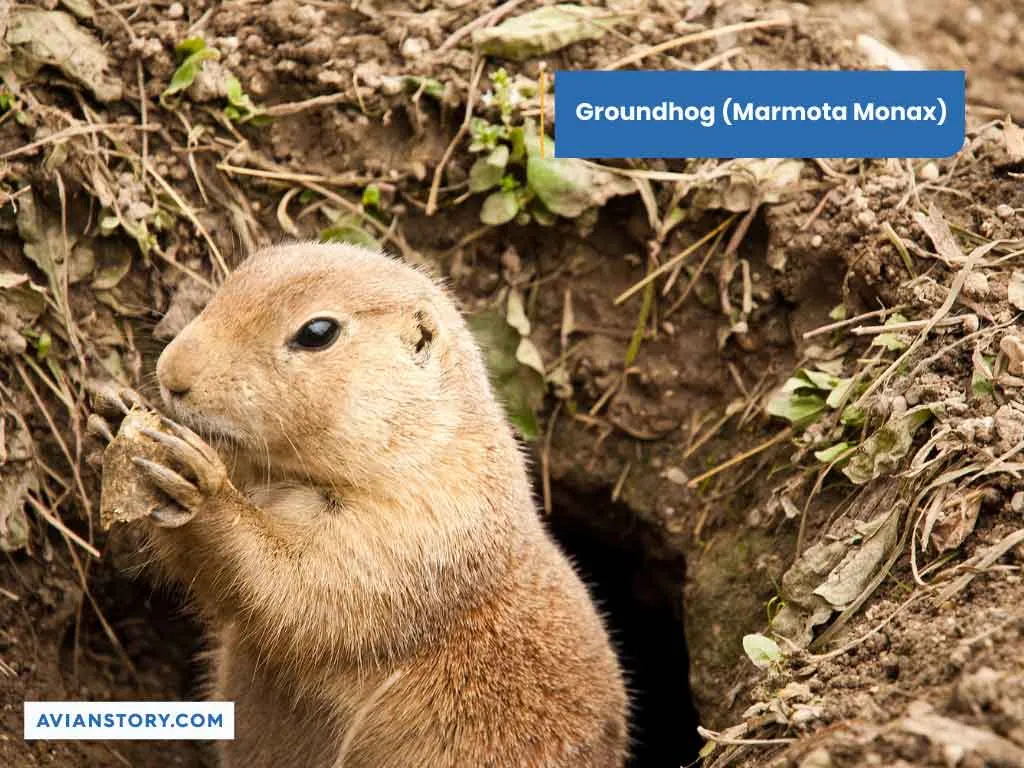
The groundhog, also known as the woodchuck or whistle pig, is a rodent species in the Sciuridae family. They are native to North America and can be found in various habitats such as forests, fields, and suburban areas.
Groundhogs are well-known for their burrowing abilities and are one of the most skilled burrowers among rodents. They build intricate networks of underground tunnels that can be several feet deep and up to 30 feet long. Groundhogs use these burrows to protect themselves from predators and hibernate during winter.
In terms of appearance, groundhogs are medium-sized rodents weighing up to 13 pounds and growing up to 2 feet in length. They have short, powerful legs adapted for digging, and their fur is silvery brown. Groundhogs have sharp teeth that are used for gnawing on plants and digging.
Groundhogs are herbivores that feed on various plants, including grasses, clovers, and dandelions. They are active during the day and are known for their tendency to sit upright on their hind legs and survey their surroundings.
Do Hawks Eat Dead Groundhogs?
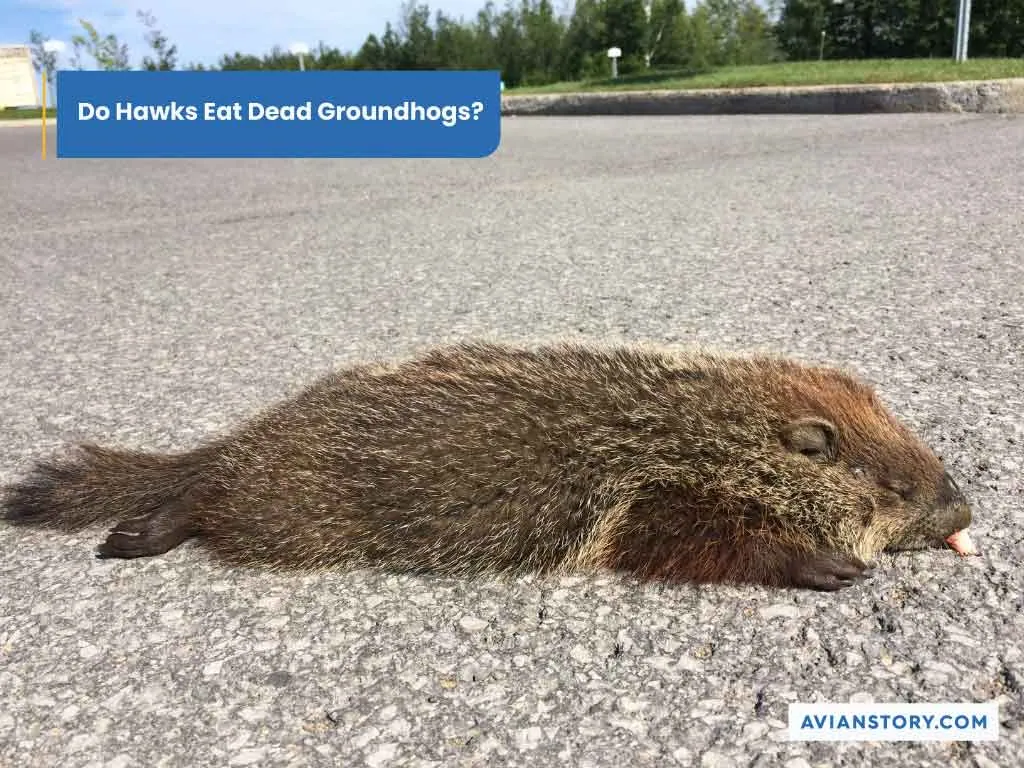
Hawks are carnivorous birds of prey that primarily feed on live prey such as rodents, birds, and other small animals. They prefer to hunt live prey because it provides a more consistent food source and allows them to use their hunting skills.
However, they may also scavenge on dead animals. As a result, if a hawk comes across a dead groundhog, it may eat it. Note, if the groundhog dies due to illness or disease, the hawk may avoid it as a potential food source to avoid becoming ill themselves.
Factors Affecting Hawks’ Predation On Groundhogs
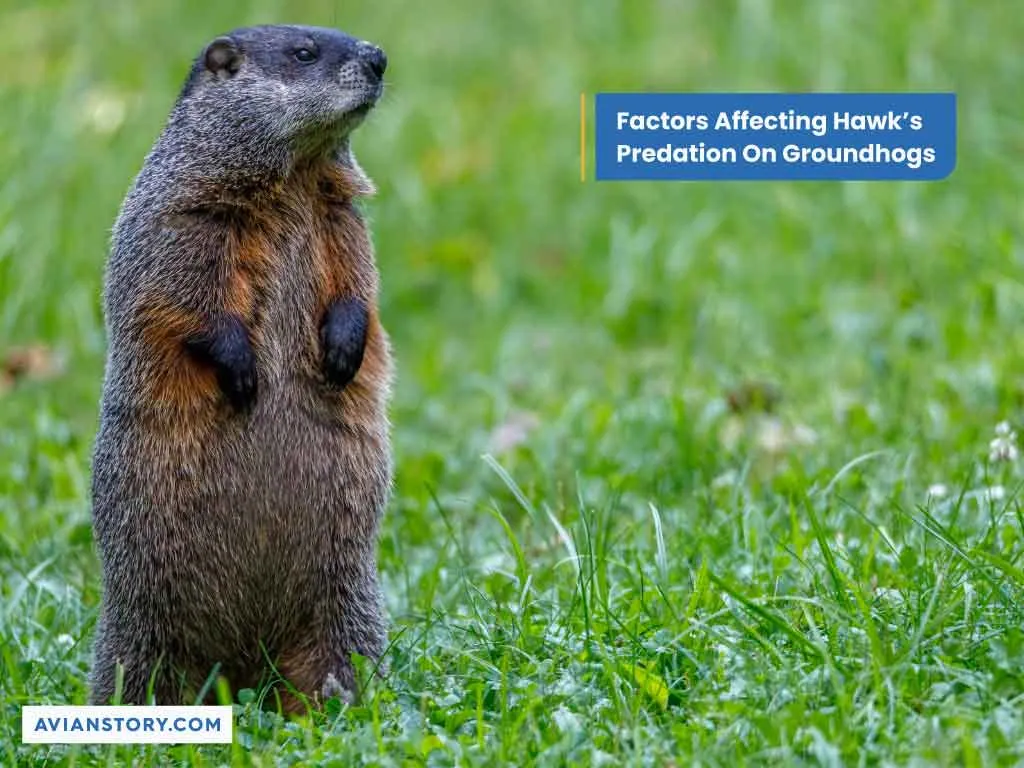
Several factors can affect their ability to hunt and kill groundhogs successfully. They include:
Habitat
Hawks prefer open habitats with clear sight lines, such as grasslands, fields, and deserts. They can spot potential prey from a distance in these habitats and fly in quickly for an attack. In contrast, wooded areas can provide cover for groundhogs, making them harder to spot for hawks.
Size And Strength Of Prey
Groundhogs are relatively large and powerful rodents, which can make them challenging prey for some hawks. Larger hawks, such as red-tailed hawks, are better equipped to take down groundhogs, while smaller hawks may struggle to subdue them.
Groundhog Behavior
Groundhogs are skilled at avoiding predators and often retreat to their burrows when they sense danger. This can make them difficult for hawks to catch, as they may be able to make it to their burrows before the hawk can catch them.
Availability Of Other Prey
Hawks will take advantage of whatever prey is available. If other, easier-to-catch prey species, such as mice or rabbits, are available, the hawk may focus on hunting them instead of groundhogs.
Time Of Day
Hawks are diurnal predators, which means they are active during the day. Groundhogs, on the other hand, are most active during the early morning and late afternoon. This can make it more difficult for hawks to catch groundhogs, as they may be less active when they are most active.
Geographic Distribution And Habitat Overlap
There may be more opportunities for predation in areas where hawks and groundhogs share habitat. Groundhogs, for example, are a common prey item for Red-tailed hawks, which live in the same open grasslands as groundhogs in North America’s Great Plains region.
Hunting Techniques f Hawks For Capturing Groundhogs
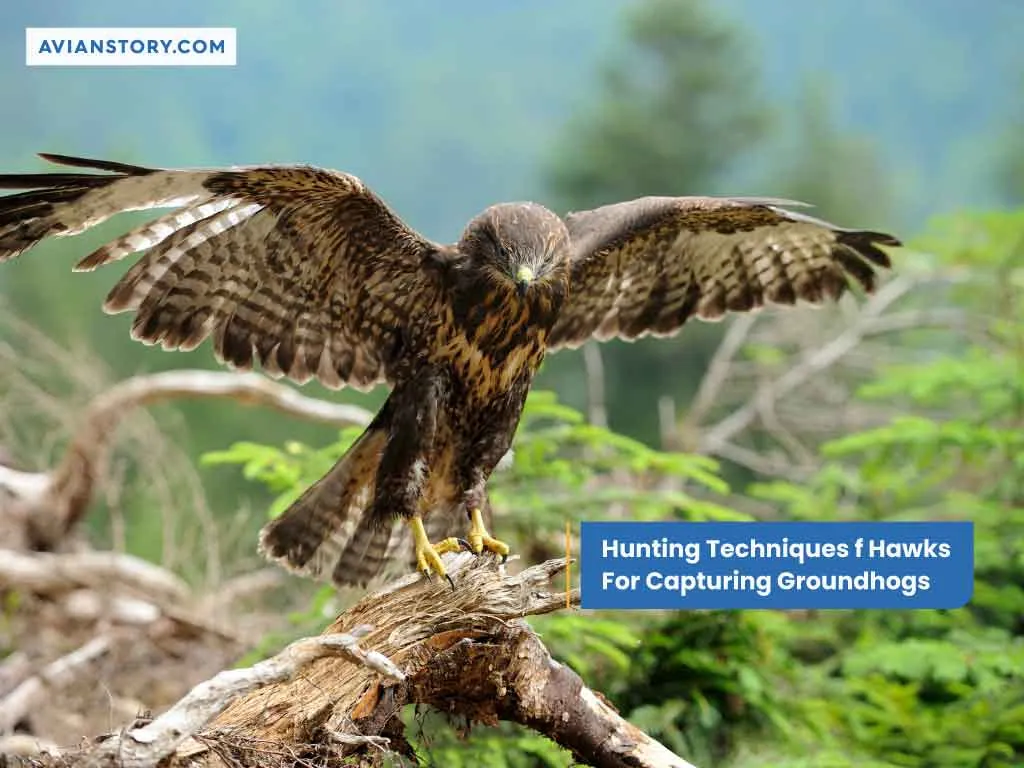
Some of the most common techniques used by hawks include:
Perch Hunting
Here, the hawk dives down from a high point at incredible speeds, frequently exceeding 200 mph (320 km/h). They will tuck their wings close to their bodies as they approach their target, making them more aerodynamic and reducing air resistance. They will extend their talons at the last moment and grab their prey, often killing it instantly.
Ground Hunting / Cooperative Hunting
Some hawks, such as Harris’s hawk, hunt on the ground in groups. They will work together to flush out a groundhog from its burrow, then take turns attacking it until it is killed. Here is a video showing this:
Aerial Attacks
Some hawks, such as Cooper’s hawk, may launch surprise aerial attacks on groundhogs. They use their acute vision to survey the ground below for movement or other clues of prospective prey. They routinely circle overhead, gradually lowering to gain a closer look and prepare for their assault when they discover a suitable target.
Impact of Groundhog Consumption on Ecosystems
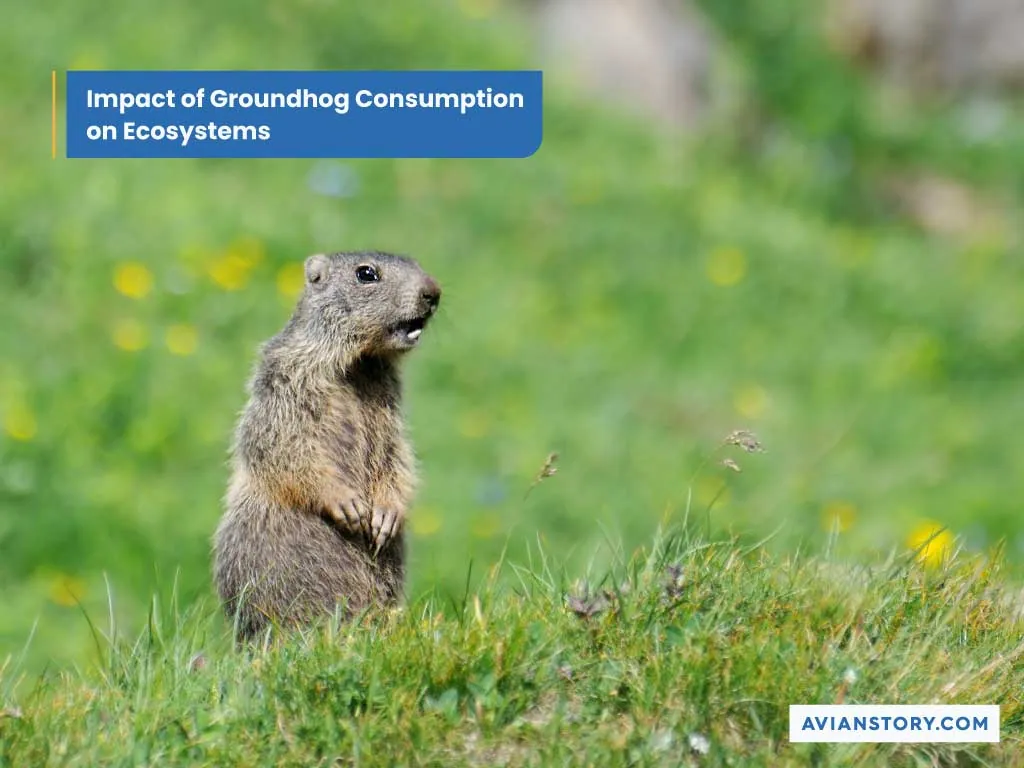
Here is how groundhog consumption can have a significant impact on ecosystems.
Impact On Plant Communities
The grazing habits of groundhogs can result in the removal of large amounts of vegetation, affecting the composition and diversity of plant communities.
Groundhogs have been observed to prefer certain plant species over others, resulting in overconsumption and underconsumption of others. Changes in the abundance and distribution of plant species can affect other animals that rely on those plants for food and habitat.
Impact On Soil Health
Groundhogs are known for their burrowing behavior, which can significantly impact soil health. Their burrows can create open spaces in the soil, increasing the water infiltration and nutrient cycling rate.
However, groundhog burrows can also lead to soil erosion and compaction, adversely affecting plant growth and soil health.
Impact On Other Wildlife
Groundhogs are a food source for many predators, including coyotes, foxes, eagles, and hawks. Their burrows also shelter other animals, such as rabbits, skunks, and snakes.
Impact On Humans
Groundhogs can be considered pests in some situations because they are known to damage crops and gardens. They are known to reproduce quickly, and their population can quickly grow out of control, causing problems for farmers and gardeners.
That is why hawks play a crucial role in maintaining the ecological balance of their habitats. By preying on groundhogs, hawks help control their population and maintain a healthy balance in the ecosystem.
In areas where groundhogs are causing damage, humane removal methods, such as trapping and relocating, may also be required.
Conclusion
Hawks prey on small mammals, including mice, voles, and rabbits; however, they will also prey on groundhogs if they get a chance or if there are no other food sources. Many factors can affect whether or not they are successful in doing so. These factors range from the size and strength of the hawk to the habitat overlap of the two species.
Overall, hawks and groundhogs have an important relationship that helps to shape the ecosystems in which they live. Hawks play a vital role in controlling groundhog populations and maintaining the balance of their natural habitats by preying on them.
Resources:
- https://www.pbs.org/wnet/nature/blog/groundhogs-facts/
- https://www.in.gov/dnr/fish-and-wildlife/wildlife-resources/living-with-wildlife/groundhog/
- https://www.allaboutbirds.org/guide/Harriss_Hawk/overview
